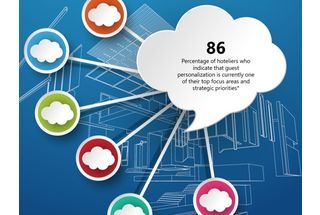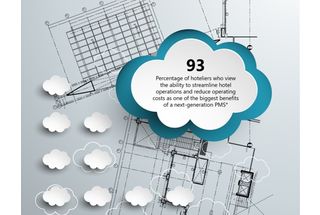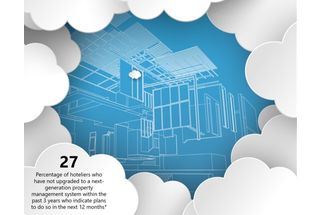What Hotel Technology Decision Makers Need to Know About Cloud Solutions




"Built for the Cloud: A Blueprint for Hotel Technology Success" is now available for complimentary access. Click here to access. The following is a brief excerpt.
For well over a decade, hospitality industry pundits predicted widespread cloud adoption by hotels and resorts. Only in recent years, however, have cloud-based models begun to disrupt the established lay of the land, migrating on a large scale basis from peripheral point solutions to the core property management system.
Importantly, cloud-based solutions are not, in fact, always based in the cloud. Some of the dominant PMS legacy solutions that are currently in place across Europe, North America and Asia have been merely upgraded with a web front-end interface. The interface provides access via an internet browser on a computer, tablet or mobile device to the back-end software, which remains hosted on a local, on premise server.
This type of cloud-based hospitality software, in which certain critical elements continue to reside on-premise — including, in many cases, the actual database housing the guest data — are known as hybrid cloud solutions. A web-native "true cloud" solution, on the other hand, is hosted on shared application servers in a public cloud environment and has the advantage of being more agile, flexible and open to multi-tenancy. Another advantage relates to software release updates. With a true cloud solution, these upgrades are more seamlessly and frequently deployed and also included as part of the cost.
With respect to system upgrades, the shift from on-premise installation to cloud-based deployment have caused hoteliers to pay close attention to service level agreements and up-time guarantees. This is no surprise given that the PMS handles virtually all operations, including guest-facing service functions. Hotels that experience technology performance issues generally pay a dear price.
In the past, these issues have tended to arise most often during, or immediately following, system upgrades of on-premise, client-server software. Regardless of how much time and effort may have gone into quality assurance testing, new releases of hospitality applications with monolithic feature-laden code were bound to have performance issues. The problem was oftentimes related to the difficulty of simulating a hotel's customized software configuration, including the specific data streams that flowed into the PMS.
To help reduce potential performance issues related to system upgrades, solution providers would commonly implement user acceptance testing processes. This meant creating a copy of the production database and installing an advance copy of the new software release on the hotel's servers. Hotel staff would rigorously test the new system, trying to identify defects and reporting any bugs or performance shortcomings.
A benefit to this approach, in addition to reducing the risk of calamity, was that hotel staff could familiarize themselves with new interface as well as features and functionality prior to going live. Software fixes would be either installed as patches or incorporated into a new release, which, typically, would then be reinstalled and retested. The trial run process continued until all issues were resolved and the software was deemed to be relatively free of defects.
The software upgrade process for a true cloud PMS is very different. In sharp contrast to the process involving legacy systems and even, to a lesser degree, hybrid cloud solutions, this process tends to be largely hassle- and worry-free for hoteliers, who, in past, were often held partially responsible for any performance hiccups. With single-version development, all hotel customers are upgraded simultaneously, putting the onus on the solution provider to ensure that the software is delivered with unfaltering quality and performs in an error-free manner.
Multi-tenancy, storage arrays and the same data center hardware generally means that all hotel customers are in the same boat when it comes to technical performance issues. If a problem arises, the same problem will usually have already affected other hotel operations. The problem will likely have already reported it and the solution provider will already be working to resolve it. Single-version development and deployment benefits everyone.
"Built for the Cloud: A Blueprint for Hotel Technology Success" is now available for complimentary access. Click here to access.
About Starfleet Research
Every year, Starfleet Research, the IT market research arm of Starfleet Media, benchmarks best practices in technology-enabled business initiatives across thousands of hotels and resorts around the world. Starfleet Media also now publishes Hotel Technology News and Restaurant Technology News. To learn more, and to access the latest Smart Decision Guides, co-branded eBooks and other resources, please visit starfleetresearch.com
Alisha Levin
Marketing Manager
Starfleet Research